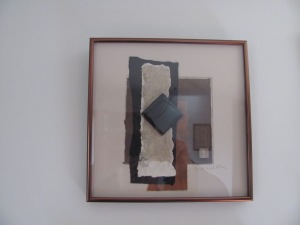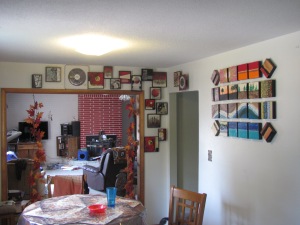I have had many people, including many in my family, why I will spend as much as I do on an original piece of art. After all, I could spend a whole lot less and buy something pretty close at a furniture store, department store, or even at Target. To most, as long as you like it and it covers the walls, why pay so much more for something else?
To me, mass produced art, like that found at these places, is much like any other mass produced item. They lack that human touch, the emotional connection, and the craftsmanship found in an original piece of art. For some things, mass production is fine. I don’t have a problem with a mass produced car, refrigerator, or washing machine. But for something as personal and meaningful as art, I need that connection. I simply must have that human touch. There is no comparison in the craftsmanship. It is a matter of quality. I am willing to pay a premium for quality. I believe that everyone is willing to do that.
How do I know that original art has higher quality than mass produced art? First, people pay more for it. This sounds like circular reasoning, and perhaps it is. Ultimately, any product is only worth as much as people are willing to pay for it. Since people are willing to pay more, it is, by definition, worth more. Second, an original work of art is the only one in the whole world. Even prints and posters that have the same image are not the same, because you do not see everything an artist has done in that painting. You cannot see the brush strokes, the mark of the chisel, or the seam on the bronze. In other words, the hand of the artist. No matter how good the picture, the reproduction, or the print, you can’t ever capture it all exactly. Only the original truly shows what the artist intended. I’ve seen many images of “American Gothic”, but the original took my breath away. I’ve seen images of Francis Bacon’s “Pope Innocent X” but you can’t imagine the power of that painting until you are standing in front of it. You can get an echo of that effect, but you’ll never be able to quite capture it.
Another reason is that I view buying art as an investment in our culture. You can’t invest in our culture by purchasing a mass produced object. That isn’t culture, that’s machination. Supporting the symphony by going to a live performance is better than buying the CD or the MP3. The sound isn’t the same. The experience isn’t the same. If you go to the concert, then buy the recording, you get to relive that experience. With art, you get to live that experience for as long as you own the work.
I also want to support our local economy. It is important to understand that many of the galleries and artists are basically small business owners. These business need money to keep going. I value those businesses, so I pay them for their products and services. The beauty of this is that I know that the money is going back into other parts of the economy locally. The artists I buy from are generally local. They buy their materials locally (for the most part). They spend their money here. The galleries rent space locally. It is generally a win-win-win.
That’s why I only buy original work. Higher quality work, investment in our culture, and support of the local economy. I’d love to hear about why other people buy the art they buy.






